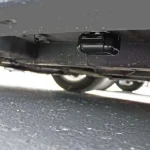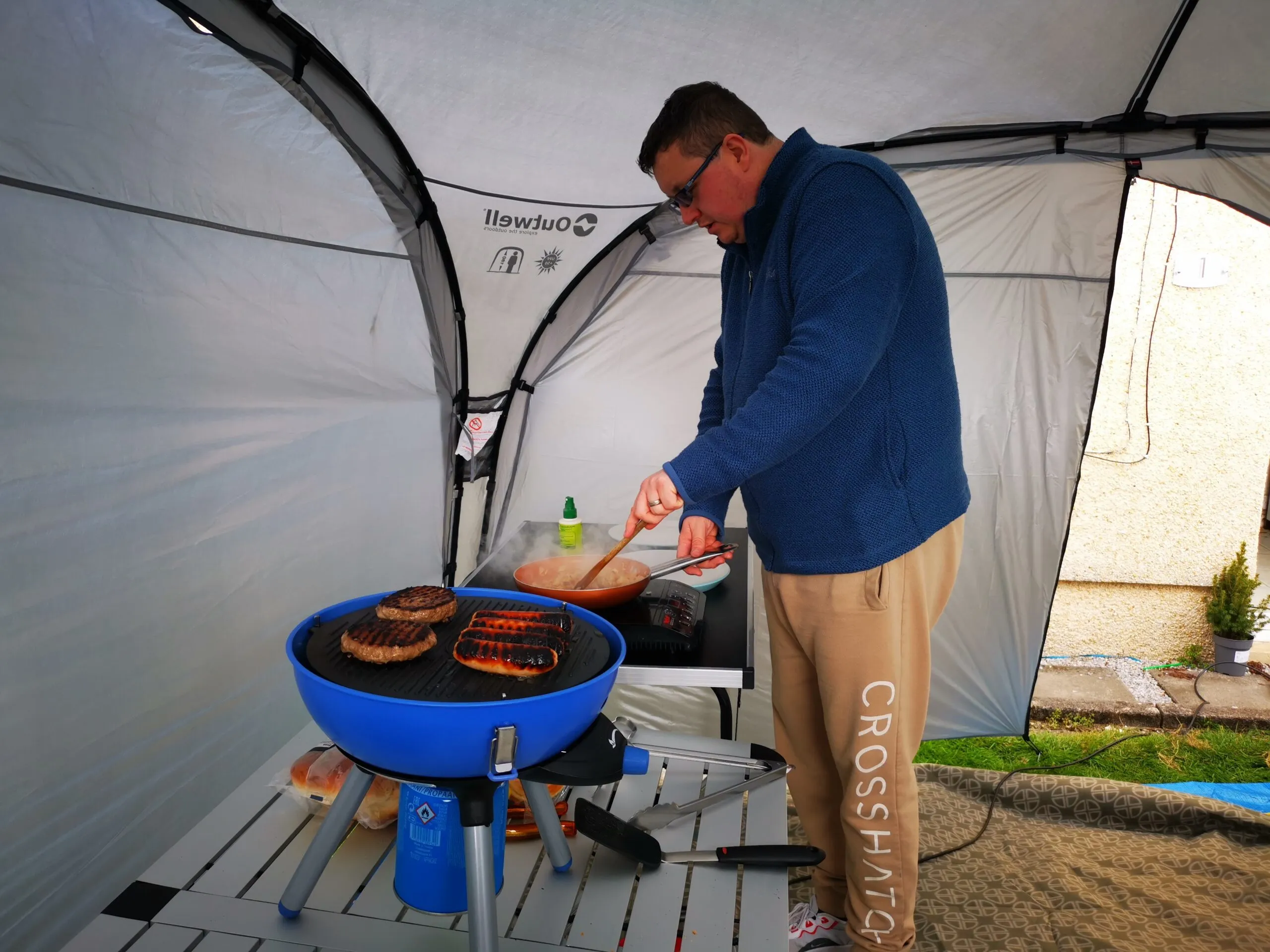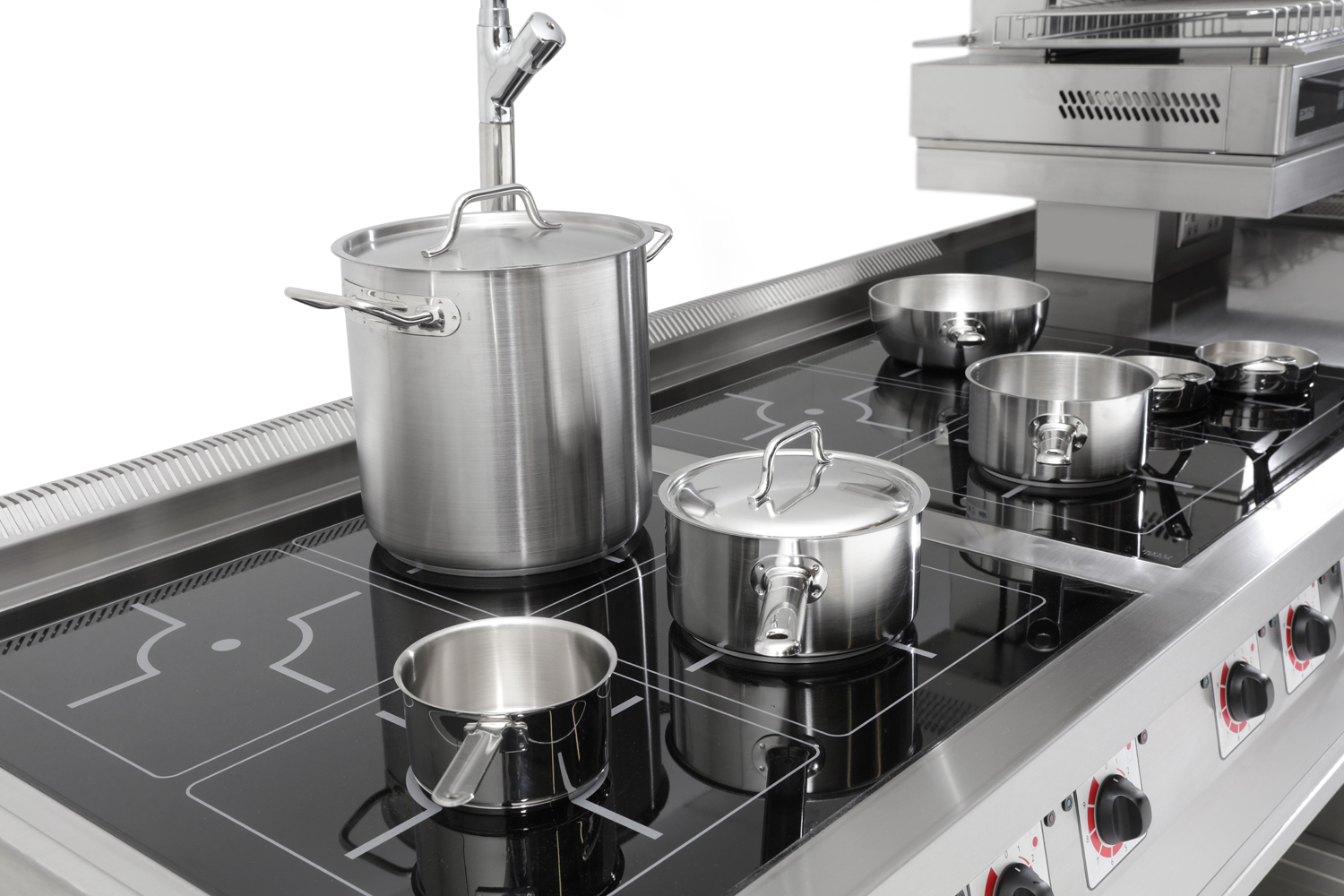If your gas oven won’t stay lit, the most common reasons are:
- Dirty or blocked burner components: Clean the burners and associated parts to ensure proper ignition and flame.
- Faulty thermocouple or flame sensor: Test and replace these safety devices if they are malfunctioning.
- Gas supply issues: Check the gas supply line and gas valve to ensure there are no problems.
If you feel uncertain about these troubleshooting steps or if the problem persists, it’s advisable to reach out to a professional technician for a safety-focused inspection and repair of your gas oven.
Possible Causes of a Gas Furnace Not Heating
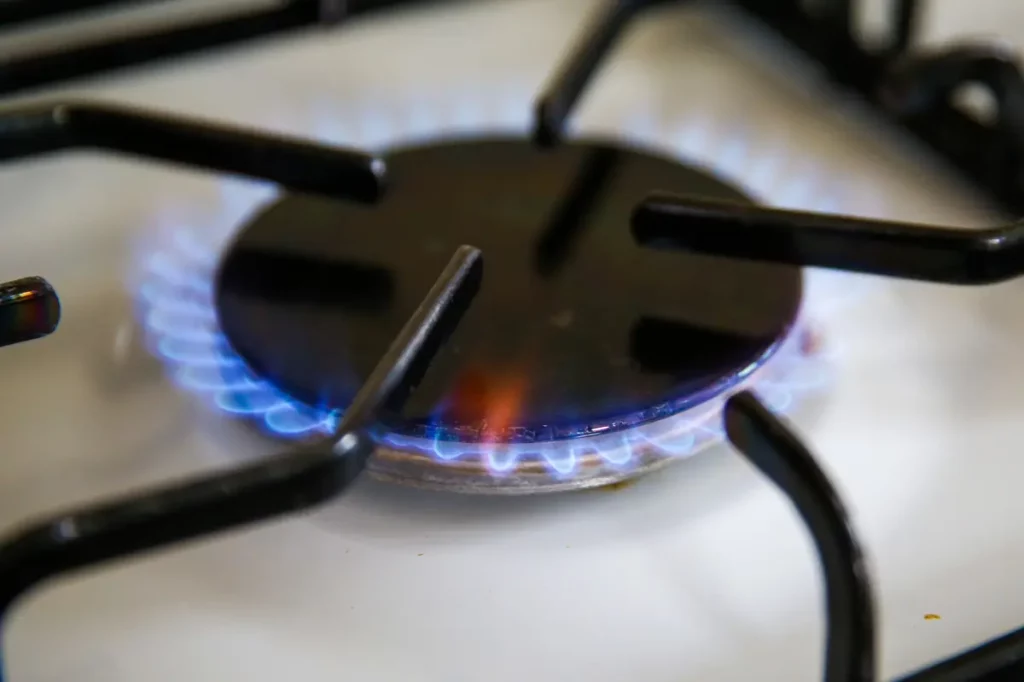
Pilot Light Issues
Explanation of the Pilot Light and Its Role
- The pilot light is a small, continuously burning flame in a gas furnace. It serves as an ignition source for the main burner.
- Its function is to spark the gas when the thermostat instructs the furnace to generate heat.
- A properly functioning pilot light is essential for the furnace to operate efficiently.
Common Problems with Pilot Lights
- Pilot Light Out: Sometimes, the pilot light may go out due to drafts, clogs, or thermocouple issues.
- Weak Flame: If the pilot light flame is weak, it may not be strong enough to ignite the main burner.
- Yellow Flame: A yellow or flickering pilot light may indicate a combustion issue, such as insufficient air or a dirty burner.
- Pilot Won’t Stay Lit: This can be due to a faulty thermocouple, as it plays a role in keeping the pilot light lit.
Faulty Thermocouple
What a Thermocouple Is and Its Function
- A thermocouple is a safety device in a gas furnace that consists of two different metals joined at one end.
- Its primary function is to sense the presence of a pilot light’s flame.
- When the pilot light is lit, the thermocouple generates a small electrical voltage, which keeps the gas valve open, allowing the furnace to operate.
- If the pilot light goes out, the thermocouple cools, and the voltage drops, causing the gas valve to shut off, preventing the release of unburned gas.
Signs of a Faulty Thermocouple
- Pilot Light Won’t Stay Lit: If the pilot light goes out shortly after being lit, it may indicate a malfunctioning thermocouple.
- Inconsistent Heating: The furnace may shut off unexpectedly, leading to uneven heating in your home.
- Difficulty Starting the Furnace: A faulty thermocouple can prevent the furnace from turning on.
Dirty or Clogged Burners
How Dirt and Debris Affect Burner Functionality
- As time passes, dust, dirt, and debris have the potential to build up on the burners within a gas furnace.
- Dirty burners can disrupt the proper flow of gas and air, affecting the combustion process.
- This can lead to inefficient burning, reduced heat output, and even safety concerns.
Cleaning and Maintenance Tips
- Turn off the gas and electricity to the furnace before attempting any cleaning or maintenance.
- Take off the access panel to
- reach the burners.
- Do Brushing or use compressed air to gently clean burners of dirt and debris.
- Inspect and clean the surrounding area for any obstructions.
Step-by-Step Troubleshooting for a Gas Furnace Not Heating
Checking the Pilot Light
Step-by-Step Instructions for Inspecting and Relighting the Pilot Light:
- Turn off the thermostat and the gas supply to the furnace.
- Remove the access panel to
- find the pilot light, a small, continuously burning flame located near the burners.
- Observe the pilot light. If it’s out, try relighting it by following these steps:
- Turn the gas control knob to the “off” position and wait for at least five minutes to allow any accumulated gas to dissipate.
- Turn the gas control knob to the “pilot” position.
- While pressing the knob, use a long lighter or match to light the pilot
- . Keep the knob depressed for approximately 30 seconds to maintain the pilot flame.
- Release the knob and turn it to the “on” position.
- Observe the pilot light again. It should burn with a steady, blue flame. If it goes out or appears weak, there may be other issues to address.
Testing the Thermocouple
How to Check if the Thermocouple Is Functioning Properly:
- Ensure the pilot light is burning steadily.
- Locate the thermocouple, a small copper or silver tube adjacent to the pilot light.
- Gently tap the thermocouple to ensure it’s properly connected to the gas valve.
- If the pilot light stays on after tapping, the thermocouple may have been loose.
- If the pilot light still goes out, use a multimeter to test the thermocouple:
- Disconnect the thermocouple from the gas valve.
- Set your multimeter to measure millivolts (mV).
- Hold one multimeter probe on the thermocouple’s copper connection and the other probe on the thermocouple’s tip.
- Light the pilot light and press the knob to keep the gas flowing.
- The multimeter should read around 25-30 mV. If it doesn’t, the thermocouple may be faulty and needs replacement.
Cleaning and Maintenance of Burners
Detailed Instructions for Cleaning and Maintaining the Burners:
- Turn off the gas and electricity to the furnace.
- Remove the access panel to access the burners.
- Gently brush away loose dirt and debris from the burners with a soft brush or use compressed air.
- Examine the burners for damage, corrosion, or obstructions. Clean away any visible dirt or debris.
- Check the area around the burners for obstructions and remove any blockages.
- Reassemble the furnace components, ensuring everything is securely in place.
- Turn on the gas and electricity to the furnace.
- Turn on the thermostat and observe the furnace for proper operation. If the issue persists, consider professional assistance.
Remember that gas furnaces involve potentially hazardous components.
If you are unsure about any of these troubleshooting steps or if you encounter a more serious issue, it is advisable to contact a qualified HVAC technician for assistance and safety.
Preventive Maintenance for Your Gas Furnace
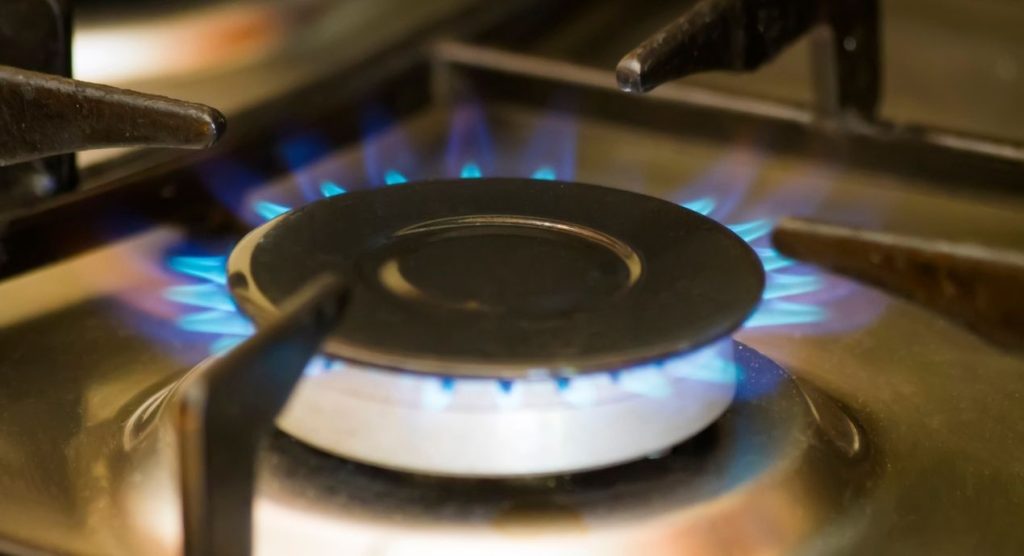
Tips for Keeping Your Gas Furnace in Good Working Condition:
Change Air Filters:
- Regularly replace or clean the air filters (typically every 1-3 months). Clogged filters reduce airflow and can strain your furnace.
- Keep Vents and Registers Clear:
- Ensure that vents, registers, and return air grilles are unobstructed to maintain proper airflow and heating efficiency.
Clean the Surrounding Area:
- Keep the area around your furnace clean and debris-free to prevent blockages and improve safety.
Test Carbon Monoxide Detectors:
- Enhance your safety by installing carbon monoxide detectors in your home and regularly checking their batteries.
Annual Professional Inspection:
- Arrange an annual HVAC inspection to catch and fix issues early. Don’t forget to l
ubricate moving parts.
- If your furnace has moving parts that require lubrication, make sure they are properly lubricated according to the manufacturer’s guidelines.
Check Gas Lines:
- Inspect the gas lines for leaks or damage, and if you find any issues, contact a professional promptly.
Regular Maintenance Schedule to Avoid Future Problems:
Follow this maintenance schedule to keep your gas furnace in good working condition and avoid future problems:
Monthly:
- Check and replace/clean air filters if necessary.
- Visually inspect the area around the furnace for any obstructions.
Seasonal (Fall):
- Have a professional HVAC technician perform a thorough inspection, cleaning, and maintenance of your furnace.
- Ensure that vents, registers, and return air grilles are unobstructed.
Annually:
Schedule a professional tune-up, which may include:
- Examine the heat exchanger for cracks or harm.
- Cleaning and inspection of burners.
- Testing the thermostat for accuracy.
- Verification of safety controls.
- Inspection of the blower motor and fan.
- Checking and cleaning the pilot light and thermocouple.
- Lubricating moving parts if necessary.
As Needed:
If you detect unusual sounds, smells, or heating changes, contact a professional for diagnosis and repairs without delay.
FAQs
Why won’t my gas oven stay lit?
Your gas oven may not stay lit due to a faulty thermocouple. It’s a safety device that senses the pilot light’s flame. If it’s malfunctioning, it can shut off the gas supply.
How can I check if the thermocouple is the issue with my gas oven?
You can test the thermocouple using a multimeter. Disconnect it from the gas valve, set the multimeter to measure millivolts, and ensure it generates around 25-30 mV while the pilot light is lit.
What should I do if the thermocouple is faulty?
If the thermocouple is malfunctioning, it should be replaced. Contact a professional technician for this task.
Are there other reasons my gas oven won’t stay lit?
Yes, a dirty pilot light, clogged burner, or gas pressure issues can also cause the pilot to go out. Regular maintenance can help prevent these problems.
Can a drafty environment affect the pilot light’s stability?
Yes, drafts can blow out the pilot light. Ensure that the area around your oven is free from drafts, and consider using draft blockers if necessary.
What do I do if I smell gas when the oven goes out?
If you smell gas, turn off the gas supply immediately, open windows, and evacuate your home. Contact the gas company or emergency services.
Why is the pilot light in my gas oven burning yellow?
A yellow pilot light can indicate incomplete combustion. It may be caused by insufficient air or a dirty burner. Clean and inspect the burner for debris.
What safety precautions should I take when working on a gas oven?
Always turn off the gas and electricity to the oven before attempting any maintenance or repairs. If you’re unsure, contact a professional technician.
Can an old or damaged pilot light also cause issues?
Yes, an old or damaged pilot light may not burn steadily. If it’s in poor condition, it’s best to replace it.
Why is my gas oven’s pilot light not igniting at all?
If the pilot light doesn’t ignite, it could be due to a gas supply issue, a clogged pilot orifice, or a faulty pilot valve.
Conclusion
In conclusion, a gas furnace is a vital component of your home’s heating system, and its proper functioning is essential for your comfort and safety.
If you encounter problems like a malfunctioning pilot light, faulty thermocouple, or dirty burners, use basic troubleshooting steps to resolve them.
However, it’s crucial to recognize the limitations of DIY efforts and the potential hazards associated with gas appliances.

